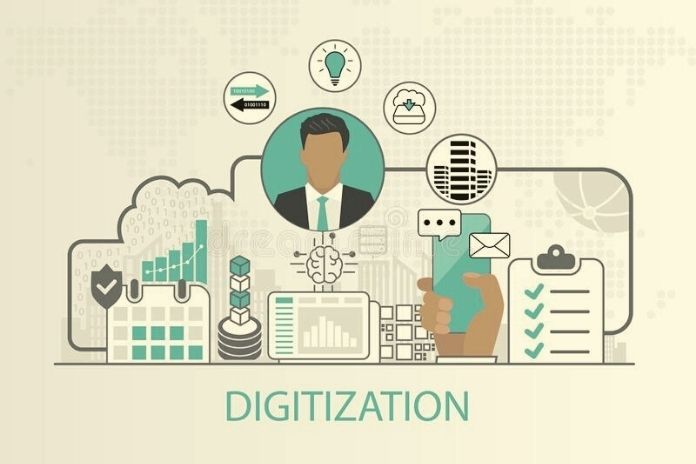There is plenty of stupid digitization. It occurs when digitization is confused with automation, new technologies and innovation. Carsten Lexa and Julian Schrader from Sophisticates dealt with the problem in a three-part series.
Everyone is talking about digitization. Unfortunately, precisely what the buzzword “digitization” means is often not sufficiently defined. However, one thing is clear: digitization – or at least planning geared towards it – makes decision-makers look good.
After all, the word alone radiates modernity and the future. It also stands for increased efficiency, reduced costs and other capabilities. On closer inspection, these effects also apply to automation projects – but only at first glance.
Stupid Digitization: Is Digitization The Same As Automation?
With the invention of the steam engine, Thomas Newcomen laid the foundation for the industrial revolution in 1712. In the following centuries, this (then) modern technology was increasingly used for the mechanization of manual activities.
In the same way, tasks can now be automated with software. The same work steps that were previously carried out manually on the computer can be recorded as a macro and played back repeatedly.
The process is usually much faster than if a human clerk had to click himself. In addition, the process is always reliable and always without errors.
Automation Of Dumb, Repetitive Tasks
This simple type of digitization is called “Robotic Process Automation (RPA)”. The robot allows a higher process speed and independence from the working hours of human colleagues. And: Robots don’t know how tired they are.
RPA is thus a practical method to do repetitive and, therefore, often dull work at short notice. For people, annoying work decreases this way. This is a quick and easy way to increase efficiency – at least as long as the underlying process is stupid enough.
Stupid Digitization: Are New Technologies Digitization?
But be careful, because, with “stupid”, we have our keyword. Too often, people understand “digitization” as simply the introduction of the latest digital technology. Using a digital tool can increase efficiency, as work steps now run automatically and with a lower error rate.
A digitally automated process scales better than mechanical, human work. Built-in errors, if any, are, however, also mounted to the same extent.
Digitization makes decision-makers look good. But don’t be too hasty to be fooled. Too often, digitization measures do not bring any gain in time, quality or money.
Harmful Digital Processes Stay Bad
Automating a destructive process does not create added value but automatically destroys resources. Thorsten Dirks, CEO of Telefonica in 2015, said: “If you digitize a shitty process, then you have a shitty digital process.”
Because here’s the crux: the process stays the same. It is not enough to bring a workflow to the Internet or develop an app for it. Instead, new opportunities for improvement must be used to redo the process.
So if you don’t just look at technical optimization and convert analogue processes into digital ones, digitization offers much greater potential.
Stupid Digitization: Is Digitization The Same As Innovation?
By digitization, we understand digital automation as well as digital transformation. While automation is sufficient to increase efficiency in existing processes, conversion ensures real innovation. Digitization must, therefore, not only be viewed from a technical point of view.
Therefore, an essential task in every digitization project is to carry out the translation work between organizational requirements of management – for example, in the previous work processes – and technical solution options.
In our opinion, neither managers nor technicians can solve digitization issues independently. Interdisciplinary interaction and common sense are required to understand requirements, challenges and opportunities adequately and to be able to make the right decisions for successful digitization in a company.
Digitization Is Not An IT Issue
At least as necessary, however, is the economic valuation. The technical change must generate added value compared to the status quo. Digitizing something just because it’s an vogue and the competition is doing it too is not a sufficient reason.
The change or innovation of working must result in a positive effect in a company that goes beyond being cool. In the end, just chasing a trend does not bring any return.
So it is clear that digitization is not just an IT topic. One would therefore be misled to accelerate the current processes with digital tools.
This will certainly work well in the beginning and can improve efficiency. But to survive in the long term and stay ahead of the competition, more has to happen – including changing the business model.
Conclusion
Digitization has arrived in our work and private life not only as a technical change but as a complete cultural change. The possibilities of automatic and digitally supported processes are fascinating and reveal unbelievable potential.
In many cases, a well-thought-out digital approach enables long-term savings in money and time, unlike the simple automation of processes. This, in turn, leads to a gain in freedom to organize everyday work with greater satisfaction and to help customers achieve more benefits.
ALSO READ: Cybercrime & Defense: Properly Protect Digital Business Processes

